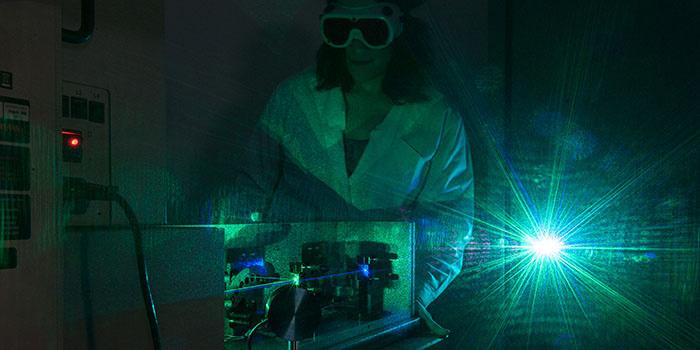
Optical radiation refers to all electromagnetic radiation within the wavelength range of 100 nm to 1 mm; the spectrum of optical radiation is divided into ultraviolet radiation, visible radiation, and infrared radiation. These, for protective purposes, are further divided into:
Ultraviolet radiation: optical radiation with a wavelength between 100 and 400 nm. The ultraviolet band is divided into UVA (315-400 nm), UVB (280-315 nm), and UVC (100-280 nm);
Visible radiation: optical radiation with a wavelength between 380 and 780 nm;
Infrared radiation: optical radiation with a wavelength between 780 nm and 1 mm. The infrared region is divided into IRA (780-1400 nm), IRB (1400-3000 nm), and IRC (3000 nm - 1 mm).
Optical radiation is divided into coherent and incoherent; the former emits radiation in phase with each other and is generated by lasers, while the latter emits out-of-phase radiation and is produced by all other non-laser sources (artificial optical radiation) and the Sun (natural optical radiation).
The target organs of optical radiation are the eye and the skin. For wavelengths less than 600 nm, the effects on human tissues are photochemical, while for wavelengths greater than 600 nm, thermal processes predominate.

In the context of identifying possible sources of incoherent optical radiation, it is first necessary to verify that the source in question does not belong to the group of 'Justifiable Sources,' meaning sources that, due to technical measures or work procedures, do not require an assessment of exposure levels, as it is inherently clear that such limits are not exceeded. 'Justifiable' sources include:
- VDT monitors, photocopiers, luminous boards, tabletop video projectors (safe if the beam is not looked at), lamps, and warning signs;
- equipment classified under the UNI EN 12198 standard, category 0;
- lamps classified as 'exempt' according to the CEI EN 62471 standard.
Otherwise, it is necessary to contact the university's ROA Safety Expert to verify the proper safe management of the source.

Regarding the risk from exposure to emitted radiation, lasers are classified into risk classes.
Class 1 includes so-called intrinsically safe lasers, as the maximum permissible exposure level is never exceeded.
Class 1M lasers are safe under reasonably predictable operating conditions but can be dangerous if the operator uses observation optics within the beam, such as magnifying lenses.
Class 2 lasers emit visible radiation at low power; they are not intrinsically safe, but eye protection is usually facilitated by eyelid reflex. It is necessary to avoid looking into the beam.
For class 2M lasers, viewing the beam can be dangerous if the operator uses observation optics within the beam.
For class 3B, direct viewing of the beam is always dangerous; viewing scattered radiation is normally not dangerous.
For Class 3R lasers, direct viewing of the beam is potentially hazardous, but the risk is lower than that of Class 3B lasers.
Class 4 lasers are dangerous even for diffuse reflection. They can cause skin damage and also pose a fire risk.
In cases where Class 3R, 3B, and 4 lasers are to be used, it is necessary to contact the university Laser Safety Expert to verify the proper and safe management of the laser source.